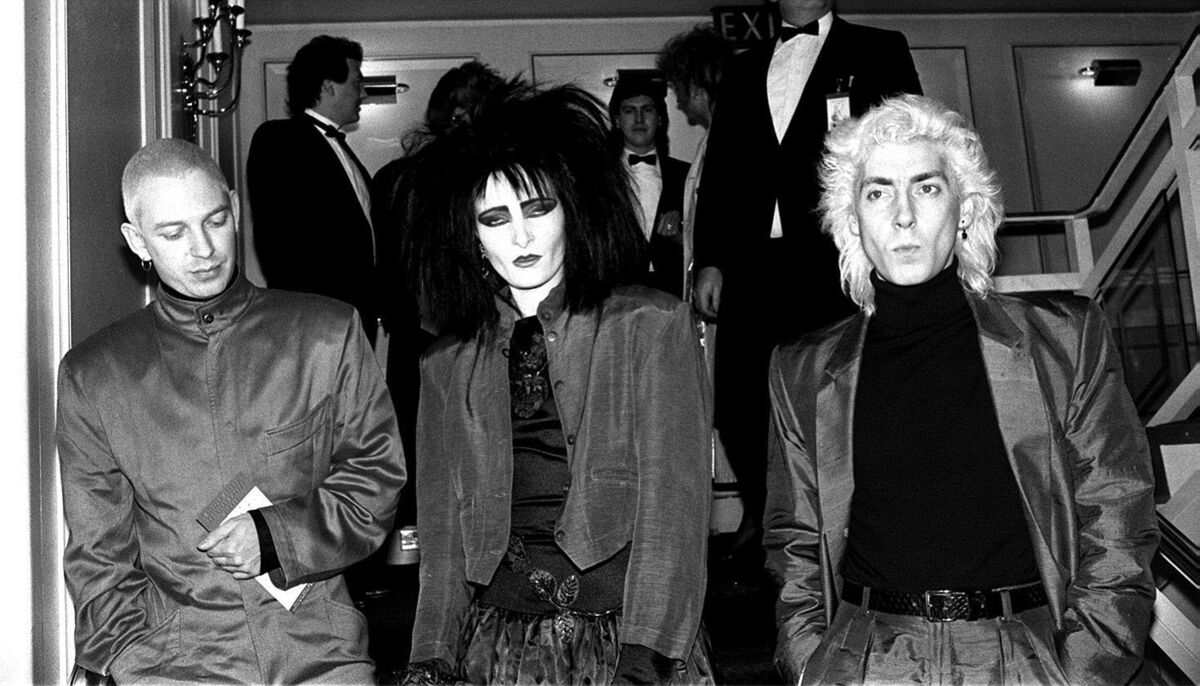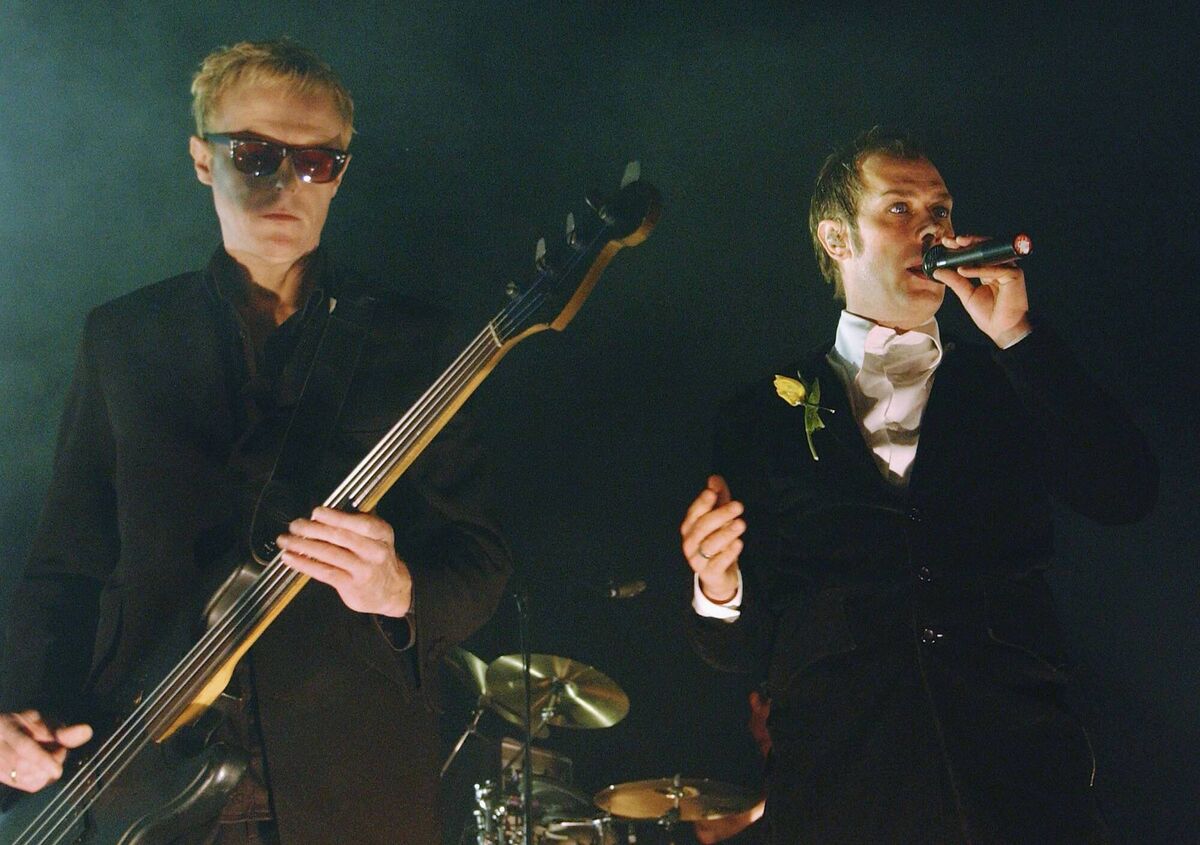Art of Darkness: John Robb on Siouxsie, Bauhaus and the history of Goth

John Robb: author, Louder than War head honcho, and member of UK post-punks The Membranes.
By complete coincidence, my interview with music journalist and musician John Robb occurs on World Goth Day. As the author of the mighty new tome, The Art of Darkness: A History of Goth, Robb approves of the designation. “Anything that puts a spotlight on a great culture is worth celebrating,” he says.
Given the connotations around Goth of the gloomy and brooding one might wonder if it’s a waste of a day as the adherents of this subculture style themselves very much as creatures of the night. However, this is the kind of mild mockery and cartoonish stereotyping that Robb resists in his book. To many, Goth conjures up images of black-clad, crestfallen-looking individuals, who may on occasion exhibit a sartorial flamboyance but whose musical tastes are casually dismissed as unfashionable.
The Ground Zero for Goth music may have occurred between 1979 - 1981, but Robb outlines a rich and multi-faceted history that has roots in romantic literature and Gothic architecture and stretches up to the contemporary ambassador of Goth, Tim Burton. Crucially, he passionately asserts an innovative genre of music and accounts for its derision by metropolitan types.
Mostly because it emerged in the regions, in places like Northampton, Hull and Leeds, removed from the purview of a London-centric media. In recent decades the post-punk scene, containing bands like Gang of Four, PIL, and Wire, has been celebrated as a true exemplar of musical sophistication, but the ignoring of bands like Bauhaus and The Sisters of Mercy, who were retrospectively dubbed Goth, irked Robb.
“The music media is really into post-punk so it’s filtered through the eyes of people who like The Gang of Four,” he exclaims. “But that’s not the whole story. There’s a whole raft of other bands who were influenced by Bauhaus. I don’t know why this is but people who write in the media are not that into Bauhaus.
“Savages, when they came out were compared to Siouxsie, but musically they sound really like Bauhaus, and it turns out their guitarist played in a Bauhaus covers band when she was really young and they were a direct influence on them. But nobody mentioned that because all the people writing about them were not Bauhaus fans. So they kind of get written out of the story, and that annoyed me. And that’s part of the reason I wrote this book,” he states.
By the time the term Goth appeared in the media, the culture had pretty much formed as fans gravitated towards a dark and drama-filled sound that they could dance to in alternative music clubs, while the main musical pillars of the scene staunchly rejected the label.
Robb recalls: “A lot of bands put their hands in the air and said, ‘we’re not Goth’, which actually they weren't Goth because they had already formed.
“But on the other hand, it’s quite a handy term. It’s a shorthand, isn’t it. If someone said Goth you’d know it would be dark, experimental, and interesting.”
The term 'Gothic' had been historically applied in a musical context in a few instances. “The Doors were described as Gothic in 1967 when they played their first gig in New York,” Robb outlines. “And then the Banshees had been described as Gothic and Joy Division in 1979. And then UK Decay were the first band to be called Goth.
“A lot of people like The Banshees, they hated the term Goth, but they don’t mind the term Gothic because it makes you think of Edgar Allan Poe and Gothic architecture. Which in a sense they fit very well into that. It’s not pretentious at all. There’s no reason why the Banshees shouldn’t be considered like a piece of fantastic architecture,” he cackles.

“When I interviewed [Banshee’s bassist] Steve Severin in the book he says he doesn’t like the term Goth as it’s a bit kind of trashy, a bit daft. It’s all a bit comic book. But he likes the term Gothic. The Banshees were pretty serious about what they were doing. That’s why they were so brilliant. They weren’t a comedy band. They weren’t a pastiche of darkness. They were embracing darkness. If you saw them at the time and you look back at their appearances on TV on YouTube, that’s not a band doing it as an ironic piss-take of Goth. That band is taking it seriously. That’s what made them so vital.”
Reared in Blackpool in England, Robb, like so many other young people in the ‘1970s found inspiration in Punk, and he witnessed the various scenes that emerged in the movement's wake.
“I like all the little journeys that came out of punk,” shares the founder of The Membranes, “but the Goth one was probably the closest because it was the most experimental. It carried a lot of that experimental deconstruction of rock that had been in Punk. Kind of in a way you could argue that Goth actually finished off Punk’s journey for it. Because Punk was all about trying to make new rock music that wasn’t cliched rock. You know, no 12-bar blues. Goth had a lot of Black music influences, embraced technology. Some of those records are completely mindblowing. ‘Bela Lugosi’s Dead’, when you actually sit back and listen to it, is an amazing experimental record that really works.
“I wanted to celebrate that in the book as well, in which some of the greatest art rock in the UK and Ireland was Goth.”
Just like the northern English towns already referenced, Robb sees in Dublin the home of one of the genre’s true outliers, the Virgin Prunes.
“One of the greatest bands in the scene,” he gushes, “who I argue in the book totally changed Dublin just by walking down the street dressed up the way they did. They were catalytic. They’re one of my favourite bands in the scene. Their story is really fascinating.”
- The Art of Darkness is available to order. John Robb will appear at BIMM College on Thursday June 1; Kasbah Social Club, Limerick, on June 2; and Prims Bookshop, Kinsale, June 3

The genre didn’t exist when the Northampton quartet recorded “Bela Lugosi’s Dead’ at the beginning of 1979, but thematically and musically the skeletal 9-minute-long opus is a foundational text in Goth music. Its dramatic musical scope allied with vocalist Peter Murphy’s baritone set the template for the genre.
Enigmatic frontman Andrew Eldritch vehemently rejects the Goth label but with each album they have redefined the music, expanding the palette by incorporating choral flourishes and an implacable electronic pulse.

Robert Smith also baulks at the Goth label and in many ways they have proved to be a musically mercurial proposition, but the mournful vocals, existential lyrics and the baroque musical qualities are undeniably Gothic.
On an instrumental and compositional basis, this Australian duo sit easily in the World Music section, but their vocals, alternately ethereal and deeply resonant, and dark, almost medieval preoccupations are very Gothic.
No one hails The Mish as exemplars of musical innovation, but having had two members serve in The Sisters of Mercy they are an example of a band comfortable with the Goth tag while also troubling the charts.




